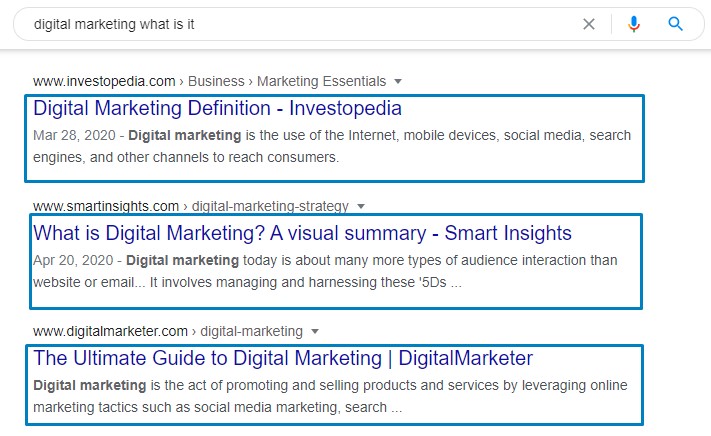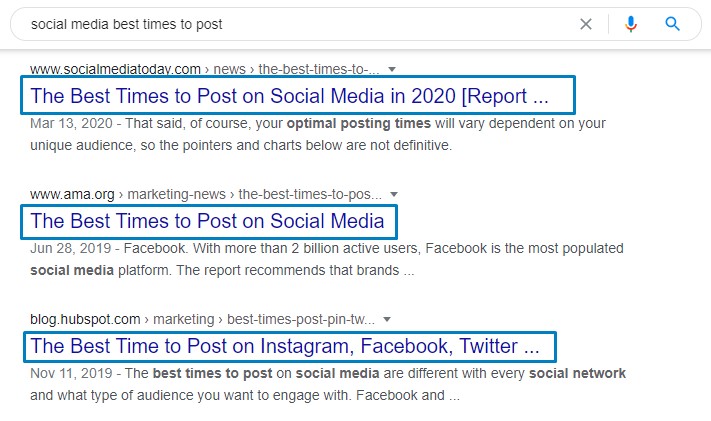[display-name-category]
[post_author]
Meta tags are bits of text at the source code level used to describe the content on a page. Browsers reference this text to identify what information is available on the page. These snippets are as valuable to your page as they are to search engines because they help each connect the searcher to their desire topic.
It is essential to add titles and descriptions to the page’s source code. When they aren’t, search engines will scan the page and display whatever content it deems relevant.
Why give up control of this feature? When marketers leave out meta titles and descriptions, the search engines default its own. This autofill makes the selection of terms less accurate than a customized text.
What Are Meta Tags?

As we mentioned before, meta tags work as content descriptors that help search engines determine what’s on a webpage. They work a lot like tags; the only difference is that you won’t see meta tags on the page. They exist at the HTML level, usually at the “head” of the page, only visible to search engines (and people who know where to look).
The “meta” stands for “metadata,” which is the kind of data these tags provide-–data about the data on your page. Neat, huh? We think so, too.
How Do Meta Tags Contribute to SEO?
Search engines value a good user experience. Meta tags contribute to this objective by locating the information. Consequently, when you use meta tags and help the search engine with a user’s query, it will take note of that.
An added level of detail can highlight your content’s essential elements and make your website stand out.
Types of Meta Tags
These are the types of meta tags to include on every page. It’s a small list, but an important one. They will contribute to your traffic by letting connecting you with queries.
- Title Tag: The text at the top of your browser.
- Meta Description: The page description in the search engine results page (SERP).
TIP: Though there are more than two kinds of meta tags, most are less common or relevant to SEO content marketing. These are the ones you will want to check every time!
Meta Title
What Is a Meta Title?
It is an HTML element that specifies the title of a web page, it is displayed on SERPs as a clickable headline. It is essential for usability, SEO, and social sharing.
Google will typically display the first 50–60 characters of a title tag. If a meta title length is under 60 characters, it will allow 90% of the titles to display correctly. There’s no exact character limit because they vary in width and Google’s display titles max out (currently) at 600 pixels.
Meta Title Example

Meta Description
What Is a Meta Description?
The meta description is an HTML attribute that can influence click-through rates when the summary is in the search results.
Featuring it won’t affect ranking, but can help clicks.
Though descriptions can be any length, Google will begin limiting at 155–160 characters. An optimal length will vary depending on the situation, so focus on being descriptive within 50–160 characters. Getting your point across will provide value and drive clicks.
Meta Description Example
Tips to Write Meta Titles and Descriptions for SEO
As you’ve learned the importance of your meta tag title and description, you should feel eager to optimize them for your page. Below are some quick tips on how to write meta descriptions and titles!
- Identify Your Value
No one knows your business better than you. Narrow down what makes your offer unique and add that to your messaging.
- Call To Action
What would you like the user to do when they see your ad? Define that action and request it from your audience in a simple way.
Tip: Test different word combinations for the same message and keep the one that performs the best.
- Write Engaging Content
To create meta titles and meta descriptions that jump, combine your value with CTAs. This will exclude fluff and doubt from your text.
- Keyword Insertion
Assign a keyword per landing page. A common mistake is putting a bunch of keywords onto one page’s title and description. Don’t.
Use your keyword at the beginning of your meta title. If SERP shortens titles of a certain length, the most relevant part will be displayed.
Conclusion
If you were once overwhelmed by meta tags, you shouldn’t be anymore. You now know what details to keep an eye out for to leverage SEO success. Would you like to learn more about how to improve your SEO? Subscribe to our blog!






